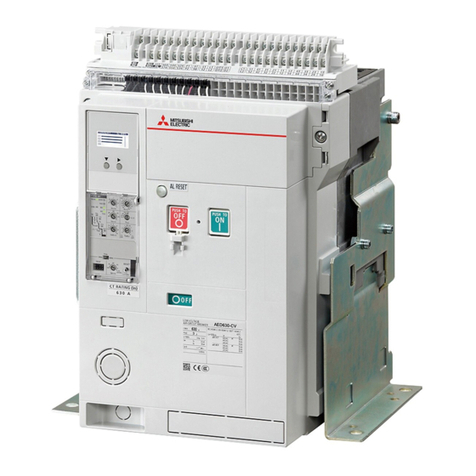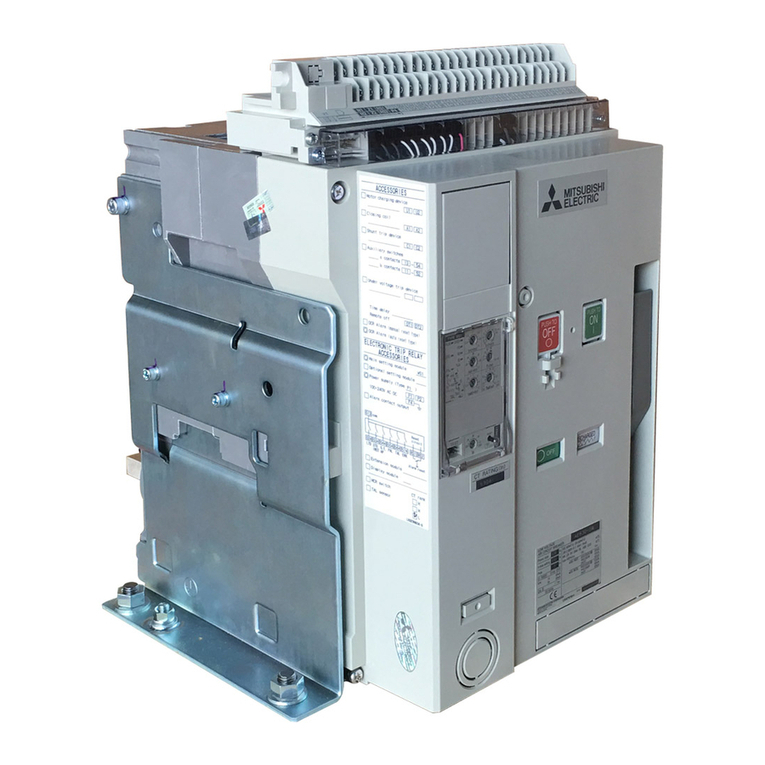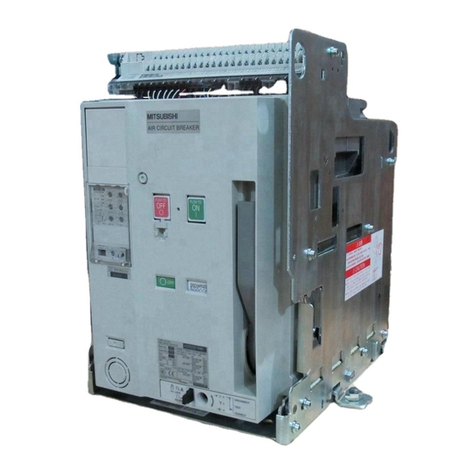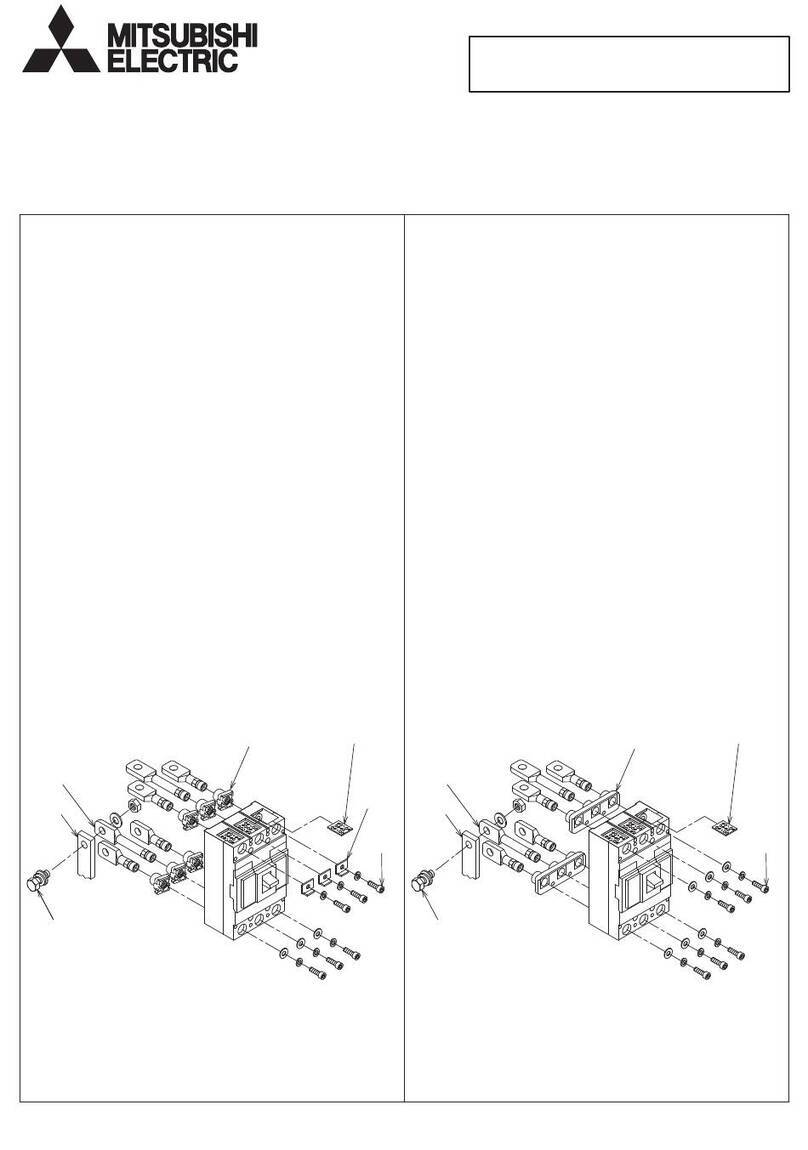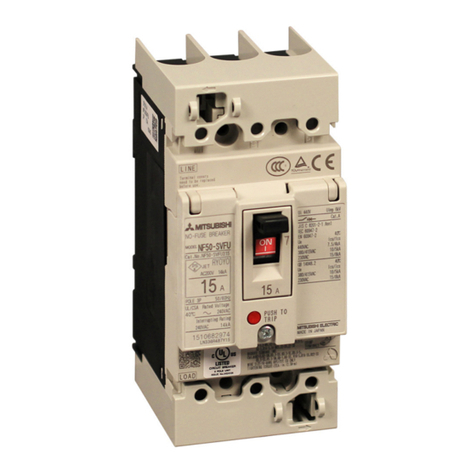
E-3
■EMC Directive
In IEC60947-2, following EMC tests are required.
1) Radiated radio frequency emission
2) Radiated radio frequency electromagnetic field immunity
BIF-CC is confirmed to IEC60947-2 in accordance with following conditions.
1) BIF-CC shall be installed in the panel board. It effects not only for safe against electric shock but also to interrupt
noise emission from the device.
2) When attaching the panel's top plate or base plate, mask painting and weld so that good surface contact can be
made between the panel and plate.
3) To ensure good electrical contact with the panel board, mask the paint on the installation bolts of the inner plate
in the panel board so that contact between surfaces can be ensured over the widest possible area.
4) Earth the panel board with a thick wire so that a low impedance connection to ground can be ensured even at high
frequencies (*ground resistance: 100 ohm or less).
5) Provide an earthing point near the BIF-CC. Earth the FG terminal of BIF-CC with the thickest and shortest wire
possible (*ground resistance: 100 ohm or less). The FG terminal function is to pass the noise generated in the
BIF-CC or the noise from outside to the ground, so an impedance that is as low as possible must be ensured.
Also, in case that the CC-Link cable is extracted to the outside of the panel board, earth it at point close to the
exit of panel board. An appropriate installation has the effect of suppressing the generation of the
electromagnetic induction and the high frequency noise.
6) If the measure described above does not provide sufficient shielding effects, fit ferrite cores to the power supply
line of BIF-CC. We recommend ferrite core made by TDK (type: ZCAT2032-0930). For CC-Link cables, however,
do not use ferrite cores.
7) CC-Link cable, Internal transmission cable and BIF-CON cable shall be kept distance more than 100mm from the
power distribution circuit. However, when parallel installation with the power distribution circuit is required, it is
necessary to increase to 300mm.
■Dielectric voltage test
The dielectric voltage test should be executed according to the table below. Do not test in points other than a
following table because unit is damaged.
Between main circuit
and BIF-CC terminals (P1 and P2)
Between main circuit
and BIF-CC terminals (DA, DB, DG, SLD and FG)
1. Connect terminals (DA, DB, DG, SLD and FG)
to the earth side.
2. Apply voltage across the entire terminals
(DA, DB, DG, SLD and FG).
Between BIF-CC terminals (P1 and P2)
and BIF-CC terminals (DA, DB, DG, SLD and FG)
Between main circuit
and BIF-CON terminals (C1, C2, A1, A2, U1 and U2)
Between BIF-CC terminals (P1 and P2)
and BIF-CON terminals (C1, C2, A1, A2, U1 and U2)
Between BIF-CC terminals (DA, DB, DG, SLD and FG)
and BIF-CON terminals (C1, C2, A1, A2, U1 and U2)
1. Connect terminals (DA, DB, DG, SLD and FG)
to the earth side.
2. Apply voltage across the entire terminals
(DA, DB, DG, SLD and FG).
BIF-CON terminals (C1 and C2),
BIF-CON terminals (A1 and A2),
BIF-CON terminals (U1 and U2), each other
■Guarantee
The period of guarantee is for 1 year from the sale date except in case of the failure has been caused by bad handling
of the device.
